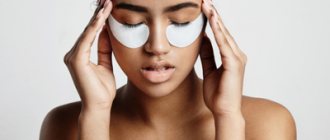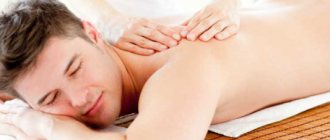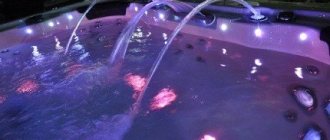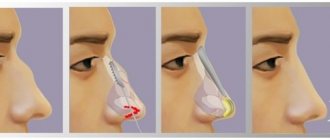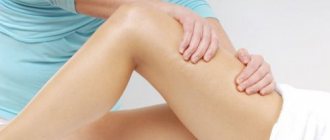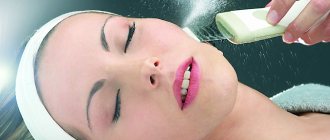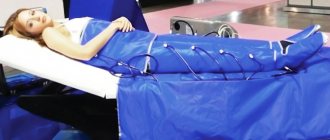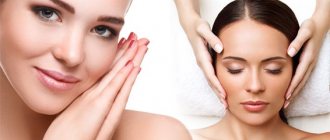Hello, dear readers! Continuing the topic of massage and its effect on the body, today we will go through the main points - organs and systems for which massage is especially useful. Let's tell you a secret, the effect of massage on the human body is positive and beneficial in every sense. Perhaps there is no part of the body or organ that would not be affected by the beneficial effect of massage.
What is massage from a medical point of view?
Massage is often perceived as a procedure to relieve nervous tension and fatigue.
This is only partly true, since any properly performed massage brings not only pleasant relaxation, but also a healing effect. Fact – massage has been successfully used since ancient times, benefiting the human body and psyche. Mentions of it are found in many languages: "masser" - to rub (French), "masch" - to gently press (Arabic), "masso" - to squeeze with hands (Greek), "makch" - to touch (Sanskrit) , “mashasha” - to feel (ancient Hebrew).
Today, massage is officially recognized as a method of non-drug treatment and disease prevention.
Massage methods are developing, enriched with knowledge from many medical fields: surgery, anatomy, physiology, orthopedics. Its effectiveness increases in combination with osteopathic methods, manual therapy, exercises, exercise therapy, etc.
Comparative characteristics of the main parameters
- Lack of human factor . In most cases, the lymphatic drainage massage procedure is fully automated, and its intensity directly depends on the mode set on the device. It is obvious that the technical apparatus will not experience fatigue, and by the end of the session there is no doubt about the quality of the manipulations it performs.
- Efficiency . The severity of the result with anti-cellulite effects depends entirely on the degree of training, experience and qualifications of the selected specialist. The quality of lymphotherapy is affected only by the regularity of the procedures. With proper systematicity, it is guaranteed to surpass the results of the previous method.
- Expected Result . If you want to achieve smoother body contours and eliminate excess skin formed after intensive weight loss, it is advisable to use lymphatic drainage. In addition, lymph massage enhances collagen production and improves skin texture. Anti-cellulite technology helps reduce fat deposits and increase the elasticity of the dermis.
- Price . Depending on which part of the body the corrective measures will be applied to, the price range of lymphatic drainage massage is between 800-1000 rubles per session. The cost of anti-cellulite therapy directly depends on the qualifications of the specialist. If the latter’s labor arsenal requires impressive practical experience, then his services will cost 1,500-2,000 rubles.
Benefits of massage
When an adult analyzes his feelings after a massage from a good specialist, he notes a surge of strength, calmness, and lightness throughout the body. Mood improves, pain goes away, swelling disappears.
After the massage, blood pressure normalizes, sleep becomes calm and deep. For psychosomatic diseases, massage is an excellent anti-stress and antidepressant remedy.
External beneficial changes appear for a reason - they are a consequence of internal processes:
- the cell renewal process starts,
- blood flow to organs increases, which helps the heart function,
- lymph flow and cell nutrition are normalized,
- local and general immunity increases.
Massage affects the body through physical-mechanical, reflex and neurohumoral
levels.
The physical and mechanical component of massage procedures relieves spasms of the fibers of damaged tissue, releasing compressed blood vessels and nerves - the source of pain.
The reflex mechanism of massage promotes the transmission of positive information through receptors, a mood for health, to the nerve centers.
Neurohumoral effects provide benefits at the level of hormones and other biologically active substances, which, thanks to massage, activate metabolic processes.
Duration of one session and number of recommended procedures
The average duration of one massage session lasts from half an hour to one and a half hours. The duration of one procedure depends on your individual health indicators and, as a rule, depends on the attending physician and massage therapist, as well as the goals that need to be achieved with this therapy.
In the Russian massage system, a session usually lasts about 60 minutes. During this time, the massage therapist treats the neck, pelvis and back for 20 minutes, the lower limbs for 18 minutes, the upper limbs for 12 minutes, and the chest and abdomen for 10 minutes. The entire course in most cases consists of 10-15 sessions.
Advantages of the Ostoclinic massage center
In our clinic, the attending physician first conducts a thorough examination of the patient. After this, therapeutic massage can be prescribed as an element of complex therapy for the following diseases and conditions:
- headache,
- pain in the neck, back, lower back,
- osteochondrosis, radiculitis,
- treatment of arthritis, bronchitis, pneumonia (except acute forms),
- healed stomach or duodenal ulcer,
- spasmodic or flaccid paralysis,
- chronic heart failure,
- angina pectoris
- hypertension or hypotension,
- chronic gastritis,
- constipation
Medical massage shows high effectiveness in rehabilitation after bruises, muscle sprains, ligaments, tendons, and recovery after bone fractures.
Indications for use
The main indications for the procedure may be the following:
- Rachiocampsis.
- Problems with the digestive tract.
- Frequent headaches or migraines.
- Recovery from injuries.
- Osteochondrosis.
- Diseases of the upper respiratory tract (as an adjuvant therapy).
It is important to note that some people after the procedure feel irresistible drowsiness, a runny nose and increased blood pressure. But all these symptoms are short-lived and disappear quickly.
Manual massage in Moscow - how the session goes
Stroking.
The massage therapist's brushes glide over the patient's skin relaxed and free, exerting a slight superficial force. Stroking is used at the beginning to prepare areas of the body, as well as at the end of the session. This technique allows the patient to tune in and get used to the massage therapist’s hands, and helps relieve pain after sensitive moments.
Rubbing.
The massage therapist’s hands form a skin fold in the desired area, after which they gradually move it along the muscle line, warming up the soft tissue. Rubbing helps prepare the body and muscles for a deeper impact. Also at this stage, possible problem areas are identified - sprains, spasmed muscles.
Kneading.
The massage therapist cyclically grabs, lifts, squeezes, twists, and displaces tissue. A good specialist, competently using this complex technique, has a powerful effect on the patient’s neuromuscular system.
Vibration and shock techniques.
Shaking tissues for several seconds through jerking movements and light blows with different frequencies, amplitudes, and directions.
So, what effect does it have on our body?
You and I know that there are many ways to influence the human body through massage. This is a general, therapeutic, anti-cellulite, head, back and collar area, cupping, honey... Today we are talking about a general massage, which the master does for 1.5-2 hours, alternately working all areas of the body - back, arms, legs, shoulder belt, head.
Since the contact of the master’s hands with our body occurs through the skin, it first of all experiences a beneficial effect.
Massage systems
Despite the enormous diversity and complexity of classification, only two massage systems are recognized throughout the world: European and Eastern.
They differ in techniques and depth of impact, in relation to reflex zones.
European system
European classical massage forms the basis of hygienic, therapeutic, sports and cosmetic types of massage. There is no impact on reflex zones, unlike the eastern system.
The European school of massage has three branches: Russian, Swedish, Finnish.
Russian branch
It is dominated by kneading techniques, which gives a deeper effect not only on the fascia and joints, but also on the muscular, vascular and nervous systems. Thanks to precisely dosed techniques, the massage therapist uses his strength more rationally, giving the patient rest and relaxation. The result of this massage is improved blood flow and lymph circulation.
Swedish branch
Consists of stroking, rubbing, kneading, movement. The massage therapist rubs the seals, stretches the neurovascular bundles and muscles.
Finnish branch
Here the specialist uses a limited number of techniques, mainly kneading the body with the pads of his thumbs. This method is more effective on flat muscles.
Eastern system
It came from the countries of Asia Minor and Central Asia, where massage is done not only with hands, but also with feet. Masseurs do not use any oils; they perform massage movements not only from the periphery to the center, but also vice versa.
Oriental foot massage should be used with extreme caution! It is suitable for athletes with well-developed muscles, or simply physically strong people. If there are problems with the spine, such a massage can provoke displacement of the intervertebral discs.
Oriental massage specialists take into account the directions of meridians (channels) and the movement of “qi” energy in accordance with Chinese philosophy. Don’t be surprised if the massage therapist practices not only stroking, rubbing and kneading techniques, but also stretching and twisting the limbs. At the same time, he uses his body weight as much as possible to achieve the desired pressure.
Effect on joints, ligaments, tendons
Using various techniques, you can improve the condition of joints, ligaments and tendons. During the session, the specialist influences the joints indirectly - through the muscles. But since the joints of the arms and legs are closely connected to the muscles, the flow of blood and oxygen enrichment of the adjacent muscle tissue cannot but have a beneficial effect on the condition of the joints.
With the help of a massage therapist, you can not only strengthen your joints, ligaments and tendons, but also improve your condition after injuries and operations in this area. It is not for nothing that this type of physiotherapy is included in rehabilitation courses as one of the key methods for restoring motor function of the limbs.
Types of massage
There is no consensus in the world on the classification of massage procedures. Often the same type of massage can be called differently. For example, classic and Swedish, hygienic and preventive.
If you focus on the final goal of the procedures and the achieved effect, massage can be divided into the following types:
- therapeutic (medical),
- hygienic,
- sports,
- cosmetic,
- other types of massage.
Conditions
Experienced massage therapists give the following recommendations for this therapy:
- It is best done in the morning.
- The patient should be completely relaxed.
- It is advisable to take a shower before the session.
- Do not conduct the session immediately after eating; after eating, you should wait at least an hour and a half.
- You should not do it every day; it is better to massage every other day.
- After the session, you just need to lie down for 15-20 minutes.
- To carry out the procedure, you can use creams and oils with natural composition (melissa, mint, rose, patchouli, and tea tree oils are good).
- Medicinal ointments can be used only if there are indications for this.
It is worth mentioning that the time of the procedure depends on the technique and type of massage therapy; on average, the procedure lasts from 30 to 90 minutes. All movements during its implementation are carried out in the direction of lymph movement.
Contraindications
Despite the fact that the procedure has proven itself to be positive and beneficial for the body, there are some contraindications that prevent it from being carried out, they are as follows:
- Fungal infections.
- Phlebeurysm.
- Pregnancy.
- Inflammatory processes, especially those of a purulent nature.
- Colds.
- Hematological diseases.
- Tumors of any origin (their growth occurs during the procedure).
- Severe mental or physical stress.
- Pain requiring painkillers.
- Aneurysms.
- Cerebral circulation disorders.
- Enlarged lymph nodes.
- Oncological diseases.
- Dermatitis of various origins.
- Diabetes.
- Internal bleeding.
- Problems with the urinary system.
- Liver and kidney diseases.
- Skin injuries.
Some of the contraindications are temporary; the procedure is possible after they have been eliminated. There are also absolute contraindications, for example, chronic diseases.
Cost of procedures
The price for general massage varies greatly.
The average cost of one general massage session is approximately 700-750 rubles for experienced masters, beginners charge from 450 rubles. The total cost of a course of procedures is often affected by their number; sometimes massage therapists give discounts to those who immediately order 10-15 sessions.
A full body massage is an excellent method to improve your health and relax. The frequency of its implementation throughout the year is discussed with the attending physician - therapist; he will be able to provide the required amount, taking into account the state of health of his patient. Massage therapy can solve many health problems, but it must be approached responsibly.
